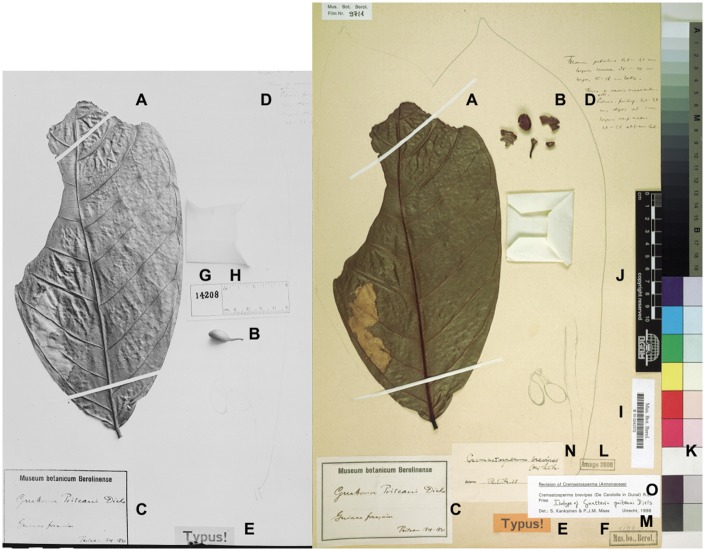Figure 1.
Example of traditional annotations on a herbarium specimen collected in the early 19th century: images of the same herbarium specimen (B 10 0242372) taken in the 1930s (left, identified as Guatteria poiteaui) and in 2006 (right, identified as Cremastosperma brevipes). This demonstrates the potential disconnect between the virtual specimen image (or record) and the actual object; in the future we expect that the virtual specimen will increasingly become the prime object of annotations, which can be accessed and managed with AnnoSys. (A) Leaf mounted on the herbarium sheet; (B) fruit (dissected on the right); (C) original herbarium label; (D) handwritten early annotation including additional morphological details (from duplicates?); (E) label indicating the type (name-giving) status of the specimen; (F) property-indicating stamp of the Berlin herbarium (cut off on the left); (G, H) ephemeral photographic negative number and scale bar; (I) permanent barcode label (UUID); (J) permanent scale bar; (K) ephemeral colour chart; (L) stamp indicating digitisation; (M) (handwriting): internal documentation of a loan; (N) annotation label as of 1938; (O) annotation as of 1998. Source (left image): The Field Museum of Natural History (2014). J. F. Macbride's Historical Photographs (1929–39) of Type Specimens from Berlin (B) (CC BY-NC 4.0); (right image): Röpert D. (ed.) 2000 + (continuously updated): Digital specimen images at the Herbarium Berolinense.—Stable identifier: http://herbarium.bgbm.org/object/B100242372 (CC BY-SA 3.0) (accessed 9 June 2016).

